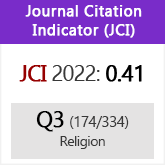“Happiness, well-being, glory and honor,” the public image that Samuel ha-Leví showed through the Synagogue of El Tránsito
DOI:
https://doi.org/10.3989/sefarad.016.004Keywords:
Jews, Toledo, Religious Art, Medieval Patronage, Medieval Lineage, NobilityAbstract
Samuel ben Meir ha-Levi Abulafia is a prominent figure in the history of Iberian Jews. He acted as the treasurer of Castilian king Pedro 1st, and funded the Toledo synagogue known as Synagogue of the Transito. The foundation of a building of such size, beauty and luxury must have meant one of Samuel ha-Levi’s major personal and political achievements, and must have been perceived as a main deed by his contemporary fellow Jews. In the context of the complex medieval patronage system, foundations were meant to symbolize nobility and prestige within the power scene of society. The analysis of the symbols utilized by Samuel ha-Levi in the synagogue he founded shows the way in which he viewed himself, as well as the way he wanted to be viewed and remembered. This essay, based in the analysis of the synagogue and its epigraphy, intends to examine the public image that Samuel ha-Levi attempted to project.
Downloads
References
Abumalham Mas, Montserrat (ed. y trad.) (1986): Mošé Ibn ‘Ezra, Kitab al-muhadara wal-mudakara (Madrid: Instituto de Filología / CSIC).
Alfonso Carro, Esperanza (2012): «From Al-Ándalus to North Africa: The Lineage and Scholarly Genealogy of a Jewish Family», en Jonathan Ray (ed.), The Jew in Medieval Iberia (Boston: Academic Studies Press) págs. 395-419.
Amador de los Ríos, José (1845): Toledo pintoresca (Madrid: I. Boix).
Ayaso Martínez, José Ramón (2000): «Antigüedad y excelencia de la diáspora judía en la Península Ibérica» Miscelánea de Estudios Árabes y Hebreos. Sección hebreo 49, 233-259.
Baer, Yitzhak Fritz y José Luis Lacave (1998): Historia de los judíos en la España cristiana (Barcelona: Riopiedras).
Bango Torviso, Isidro (2002): «Judíos, moros y cristianos bajo la autoridad del rey», Memoria de Sefarad (Madrid: Sociedad Estatal para la Acción Cultural Exterior) págs. 259-265.
Bornstein-Makovetsky, Leah (2010): «Abulafia Family», en Norman A. Stillman (ed.), Encyclopedia of Jews in the Islamic World, Vol.1 (Leiden- Boston: Brill) págs. 42-44.
Cantera Burgos, Francisco (1984): Sinagogas Españolas (Madrid: CSIC).
Cantera Burgos, Francisco (1973): Sinagogas de Toledo, Segovia y Córdoba (Madrid: Instituto Benito Arias Montano / CSIC).
Cantera Burgos, Francisco y José María Millás Vallicrosa (1956): Las inscripciones hebraicas de España (Madrid: CSIC). PMCid:PMC2223978
Cano Pérez, Mª José (trad.) (1991): Salomón Ibn Verga, Sefer Šebet Yehudah (La vara de Yehudah) (Barcelona: Riopiedras).
Ferre Cano, Lola (ed. y trad.) (1990): Abraham Ibn Daud, Sefer ha-Qabbalah (Libro de la tradición) (Barcelona: Riopiedras).
Gerber, Jane Satlow (2012): «The World of Samuel Halevi: Testimony from the El Transito Synagogue of Toledo» en Jonathan Ray (ed.), The Jew in Medieval Iberia, 1100-1500 (Boston: Academic Studies Press) págs. 33-59.
León Tello, Pilar (1979): Judíos de Toledo I (Madrid: Instituto Benito Arias Montano / CSIC).
De Moxó y Ortiz de Villajos, Salvador (2000): Feudalismo, señorío y nobleza en la Castilla medieval (Madrid: Real Academia de la Historia).
Muñoz Garrido, Daniel (2010): «La creación del mundo en el arte medieval: La Sinagoga del Tránsito», ’Ilu. Revista de Ciencias de las Religiones 15, 129-146.
Palencia Herrejón, Juan Ramón (1995): «Elementos simbólicos de poder de la nobleza urbana en Castilla: los Ayala de Toledo al final del Medioevo», En la España Medieval 18, 163-179.
Palomero Plaza, Santiago (2007): Historia de la Sinagoga de Samuel ha Leví y del Museo Sefardí de Toledo (Madrid: Ministerio de Cultura).
Pérez Monzón, Olga (2002): «Iconografía y poder real en Castilla: las imágenes de Alfonso VIII», Anuario del Departamento de Historia y Teoría del Arte 14, 19-41.
Puerta Vílchez, José Miguel (1990): Los códigos de utopía de la Alhambra de Granada (Granada: Diputación Provincial de Granada).
Roth, Cecil (1948): «Las inscripciones históricas de la Sinagoga del Tránsito de Toledo», Sefarad 8:1, 19-22.
Ruiz Souza, Juan Carlos (2006): «Architectural Languages, Functions, and Spaces: The Crown of Castile and Al-Ándalus», Medieval Encounters 12:3, 360-387. https://doi.org/10.1163/157006706779166084
Sáenz-Badillos, Ángel (1998): «La sociedad de Toledo en el siglo XIII vista por los poetas judíos» en Ricardo Izquierdo Benito y Ángel Sáenz-Badillos Pérez (eds.), La sociedad medieval a través de la literatura hispanojudía (Cuenca: Universidad de Castilla-La Mancha) págs. 199-238.
Triviño, José María (trad.) (1976): Filón de Alejandría, Obras completas. Vol. 1 (Buenos Aires: Acervo Cultural) pág. 63.
Valdeón Baruque, Julio (2000): El Chivo Expiatorio: judíos, revueltas y vida cotidiana en la Edad Media (Valladolid: Ámbito Ediciones).
Downloads
Published
How to Cite
Issue
Section
License
Copyright (c) 2016 Consejo Superior de Investigaciones Científicas (CSIC)

This work is licensed under a Creative Commons Attribution 4.0 International License.
© CSIC. Manuscripts published in both the printed and online versions of this Journal are the property of Consejo Superior de Investigaciones Científicas, and quoting this source is a requirement for any partial or full reproduction.All contents of this electronic edition, except where otherwise noted, are distributed under a “Creative Commons Attribution 4.0 International” (CC BY 4.0) License. You may read here the basic information and the legal text of the license. The indication of the CC BY 4.0 License must be expressly stated in this way when necessary.
Self-archiving in repositories, personal webpages or similar, of any version other than the published by the Editor, is not allowed.














